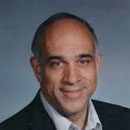This fall's book-to-movie adaptations range from great to Tom Hanks
Published in Books News
This fall’s book-to-movie adaptations cover a wide spectrum, from rarities that are just as good as, maybe even better than, the books that inspired them (”The Wild Robot,” “Conclave”) to let’s-pretend-that-movie-never-happened (”Here”).
Although “Here” — which reunites writer/director Robert Zemeckis with “Forrest Gump” stars Tom Hanks and Robin Wright — is not good, it’s interesting, especially because of what it says about turning books into movies. Richard McGuire’s one-of-a-kind book is a graphic novel, a form that can work well as a movie (”Sin City”), what with its comic book-like panels already resembling rectangular film frames.
The thing is, “Here” has no plot, something moviegoers tend to like. No real characters, either. Instead, “Here” is about a place. It’s set on one spot, occupied over centuries by a variety of different people and animals, including dinosaurs but also a Native family, a relative of Benjamin Franklin and an ordinary couple (Hanks and Wright in the film), whose lives change dramatically during the course of the several decades they live in a house on the movie’s spot.
The book “Here” zeros straight into your head because, as you flip the pages and see how one very specific place in the world can mean different things over eons, it forces you to think about your own spaces: Who lived in your apartment before you and what did they do there? What creatures wandered through the square footage that’s now your living room?
That might be an impossible task for the more realistic medium of movies. Zemeckis’ “Here” valiantly attempts to capture what the novel did so wondrously: He duplicates McGuire’s confining of the action to a single space, but that ends up making “Here” less like a movie than a play. Something resembling a proscenium arch defines the space, and many of the actors struggle within its confines, hyper-aware of the stationary camera and overacting as if they’re trying to project to the back row of a large theater, rather than to moviegoers who wish they’d turn it down about nine notches.
“Wicked” — based not just on the Broadway musical but also Gregory Maguire’s “Wizard of Oz”-adjacent novel — feels overly theatrical on occasion but it’s more successful than “Here,” partly because it incorporates more of the novel than the musical did. But the finest adaptations are the ones that rethink books for different audiences, the ones that honor the books from which they sprang but know that, like “The Godfather” films, storytelling in movies is much different than in books.
“The Wild Robot,” based on Peter Brown’s book, is a great example of that. It’s one of the best movies of the year because it takes advantage of point of view, something the movies do better than most other forms, to help us see the world through the eyes of the title character. She’s a robot named Roz who befriends a bunch of creatures when she crashes into this world and who, ultimately, saves it. Parenthood, climate crisis and friendship are among the themes you’ll find in the book, and they are satisfyingly elaborated in the gorgeous, animated film.
I’d argue that “Conclave” also is better than the Robert Harris book that inspired it, largely because it shows us so many remarkable things the book had to tell us about (that includes the striking ending, although no spoilers here about that). Even though “Conclave” wasn’t filmed in Vatican City, its production designers created the illusion that it was, an illusion that makes a big impact in a film that’s all about the priests (and one nun) who zip around the Vatican, scheming to influence the selection of a new pope.
Show-don’t-tell is also the ethos of maybe the most remarkable book-to-movie transformation this season, “Nickel Boys.” In theaters this month and on Amazon soon, it is based on Colson Whitehead’s searing novel “The Nickel Boys,” which alternates between two viewpoints and two time frames (roughly 2010 and roughly 1960) as it tells the story of an abusive, racist boys’ school.
Director RaMell Ross uses a bold technique to capture those viewpoints, making the storytelling entirely first-person. What we’re being shown is only what whichever of the two boys who is currently narrating can see. We only glimpse the two main characters, Elwood and Turner, when the story shifts to the other’s point of view.
Some moviegoers will resist “Nickel Boys,” and for good reason: We expect to see the characters we’re supposed to care about but — again, without spoilers — there’s a good narrative reason for Ross’ risky choice. It pays off in the ending of the movie, which is every bit as extraordinary as the Pulitzer Prize-winning book that inspired it and which proves that, in the hands of a gifted artist, great movies can come from great books.
©2024 The Minnesota Star Tribune. Visit at startribune.com. Distributed by Tribune Content Agency, LLC.













Comments